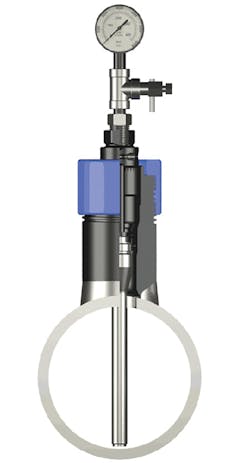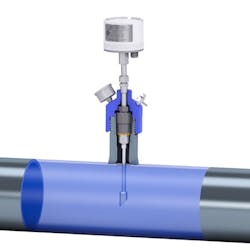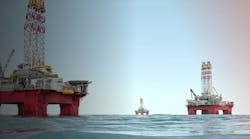Dean Smith
Cosasco
Undetected corrosion and erosion can seriously damage metal pipe work on offshore installations, leading to the need for costly maintenance and repairs. In the worst cases the effects can compromise the integrity of entire assets, leading to potentially catastrophic events.
One major field development offshore China was faced with this challenge. The facilities comprised five remotely operated wellhead platforms, an FPSO, and a riser utility platform, with a production rate of around 190,000 b/d of oil and 510,000 b/d of fluids: a combination that made the facilities vulnerable to corrosion. The presence of sand in the produced oil was also creating erosion issues. Sand erosion has, unfortunately, become increasingly common due to advances in horizontal well drilling, with velocities exceeding 100 ft/sec (30.5 m/sec). At such high speeds the sand particles act like sandpaper, scraping away layers of protective coatings and metal and making the pipe work susceptible to impairment.
Microcor Transmitter with S4700 Erosion Probe.
To address the problem, the operator needed to be able to closely monitor the situation and at the same time distinguish between the various destructive mechanisms. Traditional monitoring methods were not an option. Some sand detectors can identify the presence of sand but cannot measure the detrimental impact of the sand production as it occurs. So, the operator knows that erosion is taking place, but cannot tell exactly where, when, how fast, or how much.
In this case, the operator wanted accurate and up-to-date information that would remove the need for guesswork. Cosasco, after reviewing the set-up, proposed the installation of an online system consisting of 142 monitoring points: 95 Microcor erosion and Microcor corrosion transmitters with corrosion and biological probes, and 47 coupon monitoring points. The Microcor erosion transmitter detects erosion rates in near real time. It is also highly sensitive and capable of operating in any process environment. The Microcor corrosion wireless transmitter measures metal loss in high resolution to detect the rate of corrosion as it occurs. Erosion and corrosion data are then sent to an online logging system at a central or onshore facility for analysis and appropriate action.
The first step was to ensure the monitoring systems were installed in strategic locations, particularly as sand erosion had made elbows and bends in the pipework more vulnerable. To further improve accuracy, Cosasco placed sand probes in the middle of the line where they were exposed to the flow at a 45° angle: here the velocity of flowing sand was at its greatest. The high sensitivity transmitters and strategically-located probes offered a comprehensive analysis of the remaining pipe wall thickness and the ability to monitor changes as they occurred.
By gaining access to a clear and up-to-date picture of the process environment, the operator could assess the rates of both corrosion and erosion as they happened, and then take appropriate corrective or preventative action, prioritized in terms of risk.






